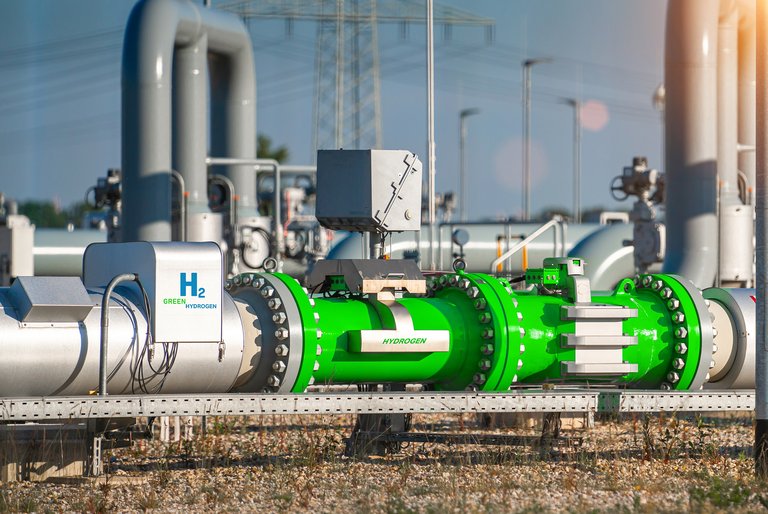To make hydrogen the fuel of the future
Hydrogen can be used to store, transport and release energy in a controlled manner. However, since it is not free in nature, it is necessary to leave other sources. Hydrogen from renewable energies is called green and is particularly interesting in industry and in the mobility sector as an alternative to fossil fuels.

BRTA technology centers have been researching technologies for years to realize this alternative. For example, they have opted for electrolysis technologies to achieve massive hydrogen production.
In Tecnalia, they have developed two technologies. On the one hand, they leverage electricity to get hydrogen and oxygen from the water. The other is based on membrane reactors. Eneko Fernández Gesalaga de Tecnalia explains how it works: “We have a reactor in which, for example, by introducing ammonia, we get hydrogen and nitrogen.” So they develop, manufacture and test reactor membranes using carbon or polymer materials in Tecnalia. Some of these materials are critical and therefore recycled.
In addition to Tecnalia, CIDETEC is working on obtaining green hydrogen by electrolizers. PEM electrolizers based on proton exchange membranes have been selected for this purpose.
Francisco Alcaide Monterrubio, responsible for hydrogen technologies, explains the process: “A membrane, a solid electrolyte is used. The membrane interspersed between two electrodes and then fed with water to produce hydrogen and oxygen. These electrodes are catalyzed with noble metals.”
For hydrogen production through this technology to be competitive, CIDETEC is developing new strategies such as reducing the noble metal content by maintaining the characteristics of the electrolyser. They also seek to improve the durability of electrolysers, both in materials and in groups of membrane electrodes.
In the search for new opportunities, CIC energiGUNE has opted for independent electrolysers, on the one hand for a safer system and on the other for cost reductions. In this technology, along with hydrogen production, another material is oxidized.
The advantage of this system is that hydrogen and oxygen are generated separately, making it safer, more effective and cheaper, as hydrogen does not need to be purified.
The objective of hydrogen production is to use it as a vector and, ultimately, to obtain energy. Fuel cells are used for this purpose.
CIC energiGUNE is synthesizing new materials that can be used in electrolysis and fuel cells. According to Paramaconi Rodríguez Pérez, fuel cells are moving in the mobility sector and hydrogen powered vehicles are on the market. However, he stressed that “it takes time, investment and policies to install large-scale hydrogen storage and distribution centres”.
On the other hand, green hydrogen can be distributed by piping. Current gas distribution networks would be most efficient. In fact, Tecnalia works with Nortegas analyzing the existing infrastructures to see if it is possible to inject hydrogen into them. For this purpose, it has an installation of material extracted from the distribution network itself.
Another way to get hydrogen to users is storage tanks. Currently used metal deposits are safe but excessively heavy and are not viable for sectors such as transport. Other materials are therefore being developed in CIDETEC. According to Alaitz Rekondo Garin, “in recent years we have been working with a special resin. We work on the formulation to make this resin useful and, once its use is finished, it is much easier to recycle or reuse it, or it has a second value.”
All these technologies are in addition to the European hydrogen strategy.
Buletina
Bidali zure helbide elektronikoa eta jaso asteroko buletina zure sarrera-ontzian











